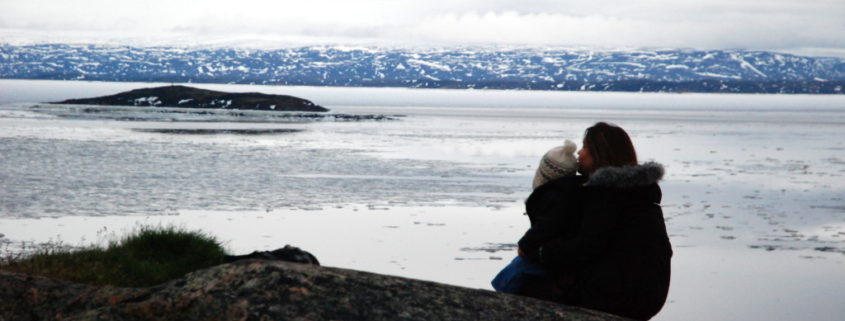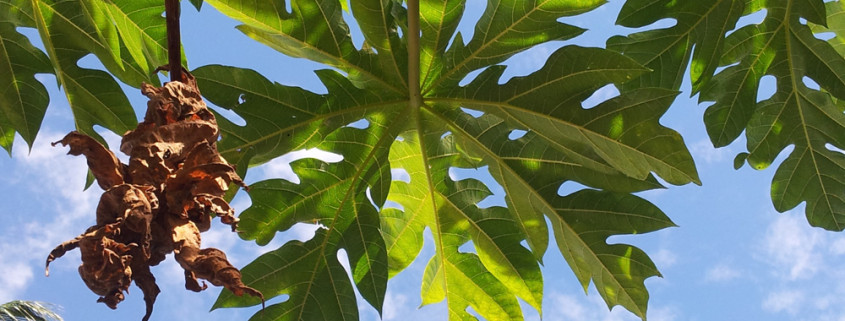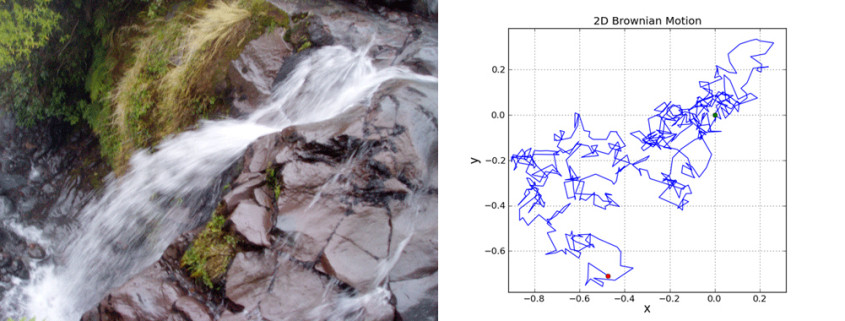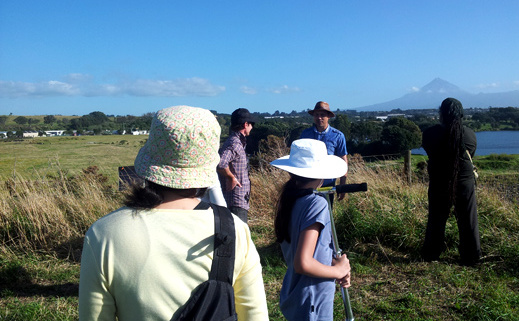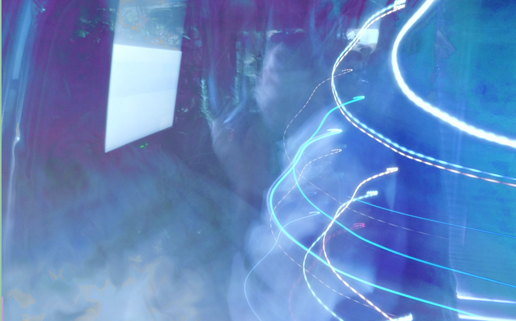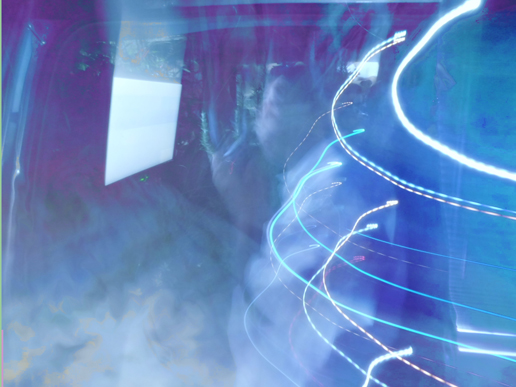Posts
Talking about our Home, Land and Sea
/in Context, Water, Peace, Power 2016, WPP 2016 Hui symposium /by Ian ClothierSCANZ2015:water*peace
/in Wai /by Ian Clothier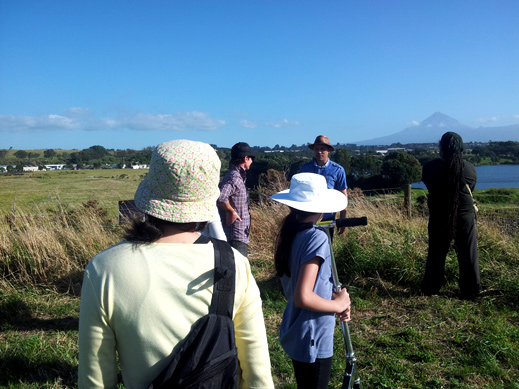
Artists, tangata whenua and locals in the environment of Taranaki, with the Waiwhakaiho River and Taranaki Maunga (mountain) in the background. This photo is from the recent Intercreate event “Ko Tatou te Tangata.”
What
Water is essential to survival, revered and respected worldwide for its power, creative and curative abilities.
Wai, water or flow is central to the worldviews of many indigenous cultures of Earth, and is of special significance to tangata whenua (the people of the land) of Aotearoa New Zealand.
The scientific study of water and the onset of turbulence was central to the development of Chaos Theory.
Today water monitoring in the environment has become important to sustainable approaches to water management.
Water as a resource has become intensely politicised and monetised, in contrast to the view that access to fresh water is a fundamental human right.
Peace is also essential to the sustainability of humans on Earth.
SCANZ2015:water*peace brings together people from diverse backgrounds,connecting everyone in a positive expression of our relationship with water and the power of peace.
Where
Water*peace begins on the with noho marae (overnight stay) at Parihaka in Taranaki, Aotearoa New Zealand. The 18th and 19th of each month are special days of the celebration of Te Whiti and Tohu, prophets of peace in colonial times. They were leaders during an infamous episode of New Zealand’s history, and Parihaka is today world renowned for the stance on peaceful protest in the face armed constabulary.
On the afternoon of the 19th, SCANZ participants will return to Nga Motu New Plymouth where they will stay and work on the campus of the Western Institute of Technology at Taranaki. Over a two week period they will collaborate, work with visit and be visited by locals, conduct workshops and create works and projects to be exhibited on the banks of the Huatoki River walkway.
There will be a public activity day, viewing of the installations and night time projections in Huatoki Plaza. A walking symposium on the final day will follow the path of the works along the Huatoki up to Pukekura Park.
When
Saturday January 17th – participants arrive in Nga Motu New Plymouth. There is a welcoming on to the WITT campus.
Sunday January 18th – travel to Parihaka (depart 8am). Overnight stay at Parihaka. Group discussion in the evening with residents of Parihaka.
Monday January 19th – mid to late afternoon return to New Plymouth.
Tuesday January 20th – morning – first presentation by invited guests (likely to be a tangata whenua group).
Wednesday January 21st – morning – second presentation ( local electronics specialist Andrew Hornblow).
Thursday January 22nd – morning – third local presentation (environmental group).
Friday January 23rd – morning – fourth local presentation (likely to be a raranga/weaving session, may involve travel).
Saturday January 24th – day is open to explore Taranaki, do project work, take part in spontaneous collaboration or take a beach, coastal or mountain walk.
Sunday January 25th – day is open to explore Taranaki, do project work, take part in spontaneous collaboration or take a beach, coastal or mountain walk.
Monday January 26th to Friday January 30th – working on projects / collaboration / testing / installation / preparation for weekend presentation.
Saturday January 31st – Day of installation of projects along Huatoki walkway and or Pukekura Park. This is also the public activity day in Huatoki Plaza. All applicable projects presented in the Plaza. Night time projections either in Huatoki Plaza or Pukekura Park.
Sunday February 1st – commence hui / walking symposium at 9am along the Huatoki walkway. Poroporoaki / reflections on the residency in the late afternoon.
Monday February 2nd – participants depart accommodation for outward bound travel.
Please note the above schedule may change and is subject to confirmation by appropriate organisations and individuals.
Being Light
/in Car Garden, Other projects, Wai /by Ian ClothierBeing Light: a festival of light and ideas explores ideas about light across Maori, Navajo, Mayan, Pueblo and Western European culture. The festival has two parts, activities in the day with stalls and market; while in the night there are outdoor projections on the side of buildings. Attendance is free.
We live in a time where there is great interest in bringing together indigenous and Western cultures, art, science and technology. Currently involved are: Patricio Dominguez, Ian Clothier, Mike Andrews, Mike Sutherland, Issa Malluf, Agnes Chavez, Tom Greenbaum, Jamila Colozzi, Courtni Hale, Glenn Parry, Enrique Hynes, Julia Pyatt, Sandra Wasko-Flood and Susan Caffrey.
Te Huirangi Waikerepuru, Te Urutahi Waikerepuru (of Aotearoa New Zealand), Will Wilson and Richard Lowenstein have expressed interest. We are in contact with Santa Clara Pueblo and have invited Mayan participation.
At night, artworks are projected onto the exterior of buildings. The projections consist of a programmed selection of:
• projection works by leading artists
• visualization of energy data from humans
• audio works and music themed on light
• sculptures that use light are installed outdoors at night
During the day, the festival includes
• the creation of an energy labyrinth as a participatory art work in both construction and then walking the labyrinth. Activities include instructions on how to turn your phone into an electromagnetic field reader
• videos where shamans and senior representatives of cultural groups are paired with video students, to make short videos that reflect beliefs about light
• solar powered art works
• visualizations and sonifications of light energy
• activities and market stalls themed on light and sun in the day time
• sunflower painting for children; knowledge sharing of indigenous knowledge about growing sunflowers
• stories of the sun and the power of the sun
• solar powered objects and artefacts
• scientific stalls that express the Western science view of light – wave particle duality
• information stands expressing cultural viewpoints on light
• music themed on light
Exhibitions + Projects
/in News /by Ian Clothier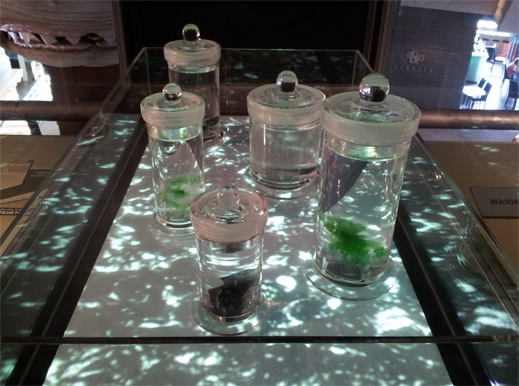
Iwasaki, Hideo cultures cyanobacteria which then photosynthesise according to the light of the moving image work projected from below (from the 3rd nature exhibition
Intercreate.org projects and exhibitions
This page has introductory information about Intercreate.org projects, which include our biennial project SCANZ, exhibitions in Albuquerque, Istanbul, Rio and in Aotearoa New Zealand.
Upcoming
We are currently working on exhibition projects for Sydney, Albuquerque and Taos and Nga Motu New Plymouth. SCANZ 2015 will be themed Wai (water) and Peace, two significant issues facing humanity.
SCANZ 2013: 3rd nature exhibition

‘The electromagnetic sensory world of sharks’ by Mike Paulin, a Zoologist was projected onto the mesh of a ‘sail’, in the galleries which houses traditonal Maori artefacts.
3rd nature at Puke Ariki integrated museum and library. To see works in the 3rd natureshow, click the image above.
Wai (for ISEA 2012 Albuquerque)

Te Urutahi Waikerepuru, Dine’/Navajo musician Andrew Thomas and his partner, Te Huirangi Waikerepuru, myself, Johnson Dennison, Gordon Bronitsky and Rosemary Dennison just before the ceremonies started.
Water is essential for life, sacred to many indigenous peoples worldwide and endemic to natural processes. This project connects Maori cosmology, notions of integrated systems, Western art and science in order to reinvigorate our understanding of flow and water. The project reiterates the urgent need to engage with sustainable practices given climate change. It also underlines the importance of listening to the indigenous voice on the environment.
The Wai (Maori for water or flow) project uses technology to connect distant spaces and cultures around the theme of water. Water holds significance for Maori of New Zealand Aotearoa, Navajo/Dine in New Mexico and neighboring regions, and is essential to survival. Isleta Pueblo, Navajo/Dine and Maori ceremonies will be performed as part of the dawn opening for the exhibition.
The project is led by Te Huirangi Waikerepuru and curated by Ian Clothier. It will open September 19th at 516 Arts in Albuquerque. A collective of people spanning four countries and many cultures – Aotearoa New Zealand, USA, Australia, India and representatives of indigenous peoples -are presenting an interconnected project. The collective is known as Te Hunga Wai Tapu (the people for whom water is sacred).
For more information about Wai, check Wai exhibition and Wai participants.
Te Kore Rongo Hungaora Uncontainable Second Nature
Te Kore Rongo Hungaora Uncontainable Second Nature was a project of ISEA 2011 Istanbul. A travelling version has since been formed, for exhibition in Rio de Janeiro.
The exhibition crosses cultural and discipline boundaries. The location of five themes from within European and Maori world views, provides a framework with which to construct a cultural bridge between Maori and European of New Zealand. Culture is usually presented separated and distinct; given the intercultural bridge, works from art and science are recontextualised as cultural texts symbolic of belief systems. Discipline is not fixed, but fluid in a transformational environment. In the exhibition, digital and post-digital exist in a state of hybridity.
Curated by Ian Clothier with an advisory panel of Nina Czegledy, Trudy Lane and Tengaruru Wineera, for ISEA 2011 Istanbul. Supported by:
Exhibited works
Please see here for a list of all the projects involved in the exhibition »
Exhibition Venues
Event: ISEA 2011 UNCONTAINABLE
Venue: Cumhuriyet Art Gallery, Istanbul, Turkey
Dates: September 14th – October 12th, 2011
Exhibition Page: Uncontainable: Second Nature
Related Event: Eco sapiens Round Table
Event: CulturaDigital.Br International Festival
Venue: Rio de Janeiro, Brazil
Dates: December 2nd–4th, 2011
Exhibition Page: Rongo Hungaora: Second Nature [Travelling]
inter / place
The works in the exhibition inter/place present an attempt to come to grips in some way with the notion of multiplicity and a sense of distributed identity. Rather than gather all the artworks up in one area and present them as a selection of works on one theme, the artists taking part in this exhibition have been free to create their own work and explore different exhibition locations for that work. Subsequently none of these works have been placed in the conventional sites for exhibitions in Puke Ariki museum. There is no claim to novelty in this approach but rather the determination that a view based on distributed and multiple identity has been hybridised to the Puke Ariki location.
Venue
Puke Ariki – three works in the museum section and one in the library.
Date: December 2 2010 – February 3 2011.
A link to the catalogue is provided below.
Like us on Facebook
Follow us on Twitter
Wai: overview
/in Other projects, Wai, Wai Exhibition /by Ian ClothierWai (for ISEA 2012 Albuquerque)
Te Hunga Wai Tapu consists of: Dr Te Huirangi Waikerepuru, Te Urutahi Waikerepuru, Ian Clothier, Jo Tito, Craig Macdonald, Julian Priest, Sharmila Samant, Leon Cmielewski, Josephine Starrs, Andrew Hornblow, Darren Robert Terama Ward, Johnson Dennison, Andrew Thomas, Dugal McKinnon, Sophie Jerram and Gordon Bronitsky. Aerial imagery courtesy of Land Information New Zealand.
There are five components to the Wai project. Te Iarere (communication across vast distances) involves data from a tree in Opunake, New Zealand Aotearoa. Tree voltage, temperature and light are measured. The live data readings control audio played in the exhibition space. Ian Clothier conceived and directed Te Iarere. Andrew Hornblow made the custom data sensors. Julian Priest and Adrian Soundy created the web interface. Darren Robert Terama Ward is a Maori musician who plays self made traditional instruments and Andrew Thomas is a Navajo musician specialising in the flute.
The second component is Pou Hihiri (the womb of the universe). The Pou is encapsulated in vinyl graphics, contains woven LED’s and has an audio component. Conceived and directed by Te Urutahi Waikerepuru, Craig Macdonald made the Pou graphics and structure with audio by Dugal McKinnon and Sophie Jerram.
Video is the third component. Indian video artist Sharmila Samant has contributed The Wasteland, an exploration of Wai in New Zealand. The Maori expression for ‘Who are you?’ is ‘Ko wai au’ which literally means ‘of whose water are you’ and is understood by Maori to mean ‘of whose ancestors are you?’ Jo Tito, a contemporary Maori artist currently studying science has made two videos of Wai, which play inbetween The Wasteland and Ruamoko. Ruamoko is made by the Institute of Geological and Nuclear Sciences in New Zealand Aotearoa, and explores both Maori and Western scientific views of earthquakes and volcanoes, the result of of flow phenomena in the Earth.
Julian Priest contributed Sink a model of anthropogenic ocean acidification. A conceptual work, carbon dioxide exhaust gasses are piped into a tank containing brine. Carbonic acid is formed, increasing acidity, which dissolves a scallop shell in the tank.
The fifth component is an animation and audio work by Leon Cmielewski and Josephine Starrs Puwai Rangi Papa. Projected onto the floor, the words of Te Huirangi Waikerepuru are etched into the mountain landscape of his home – Taranaki Maunga (mountain).
Wai is supported by:
Andrew Thomas
/in Wai, Wai Participants /by Ian ClothierAndrew Thomas has contributed audio to the project, adding a dimension of Navajo (Dineh) culture to Wai.
Biography
Andrew Thomas is a contemporary Dineh (Navajo Nation) flute player. He gives thanks to his extended family: Haltsooí Diné’e (maternal)—Meadow People Clan, Bit’ahníí (paternal)—Folded Arms Clan, Kin Yaa’áanii (maternal grandparents)—Towering House Clan, and Tsé Nahabilnii (paternal grandparents)—Over Hanging Rock Clan. He was born and raised in Rock Spring Chapter near Gallup, New Mexico. He is self-taught, and plays music composed from the heart. He has chosen the flute’s voice to express his way of life, heritage and culture.
The flute provided him the opportunity to create the music and narration for a video documentary about male Navajo weavers entitled Men Who Weave. He feels fortunate that his music has allowed him to travel widely, both nationally and internationally. He has performed all over the United States, including the Indian Summer Festival in Milwaukee, the Winter Olympics in Salt Lake City, Ute Mountain Casino, and over 10 years at the American Indian Powwow Gathering in Hawaii. He has performed in Mexico, Peru, South Korea, and throughout Europe, including Sweden where he had a story published in the book, They Call Us “Indians”. He was also the first Native American artist to play at the World Performing Arts Festival in Lahore. He was honored to perform for the president of Pakistan, as well.
His first venture into recording has resulted in a CD titled “Changing Woman’s Blessings”. More recently, he recorded in Perth, Australia, with a well-known Aboriginal actor and musician, Heath Bergersen. This cross-cultural collaboration has culminated in a CD mixing the sounds of the traditional Australian instrument, the didgeridoo, and the Native American flute titled “Friends for Life”.
Through his music and his life, he is an activist in preserving Native ways, creating awareness of the need for communication across cultures, and protecting all human rights. In this way, he strives to give back to the community. He most enjoys connecting with people of all cultures and sharing the musical language of the flute.
“Flutes are not political. They transcend heritage differences.”
pou hihiri
/in Other projects, Wai, Wai Exhibition /by Ian ClothierPou Hihiri – The Womb of the Universe
Project team
Dr Te Huirangi Waikerepuru, Poutua, Kaumatua (Elder), Author
Te Urutahi Waikerepuru, Concept Designer & Artist
Julian Priest, Custom Electronics
Tom Greenbaum, Custom Electronics
Craig McDonald, Graphics Artist
Sophie Jerram & Dugal McKinnon – Sound Effects
Artist statement
The Pou Hihiri is a representation of the womb of the universe. Within its core is the blue print, the DNA, the life‐giving blood of the universe, the unrealized potential of all that is and all that is to come. Pou Hihiri is a visualisation of the receptacle, the womb that holds the great nothing, the long nothing, the deep nothing all of which is yet to be realized. It is pre‐emergent potentiality, at times, heaving, breathing, laboring in its efforts to release it’s burden. Pou Hihiri has the deceptive appearance of stillness, timelessness and spatial immortality.
The pou is part of the exhibition Wai at 516 Arts during ISEA 2012 Albuquerque Machine Wilderness.

